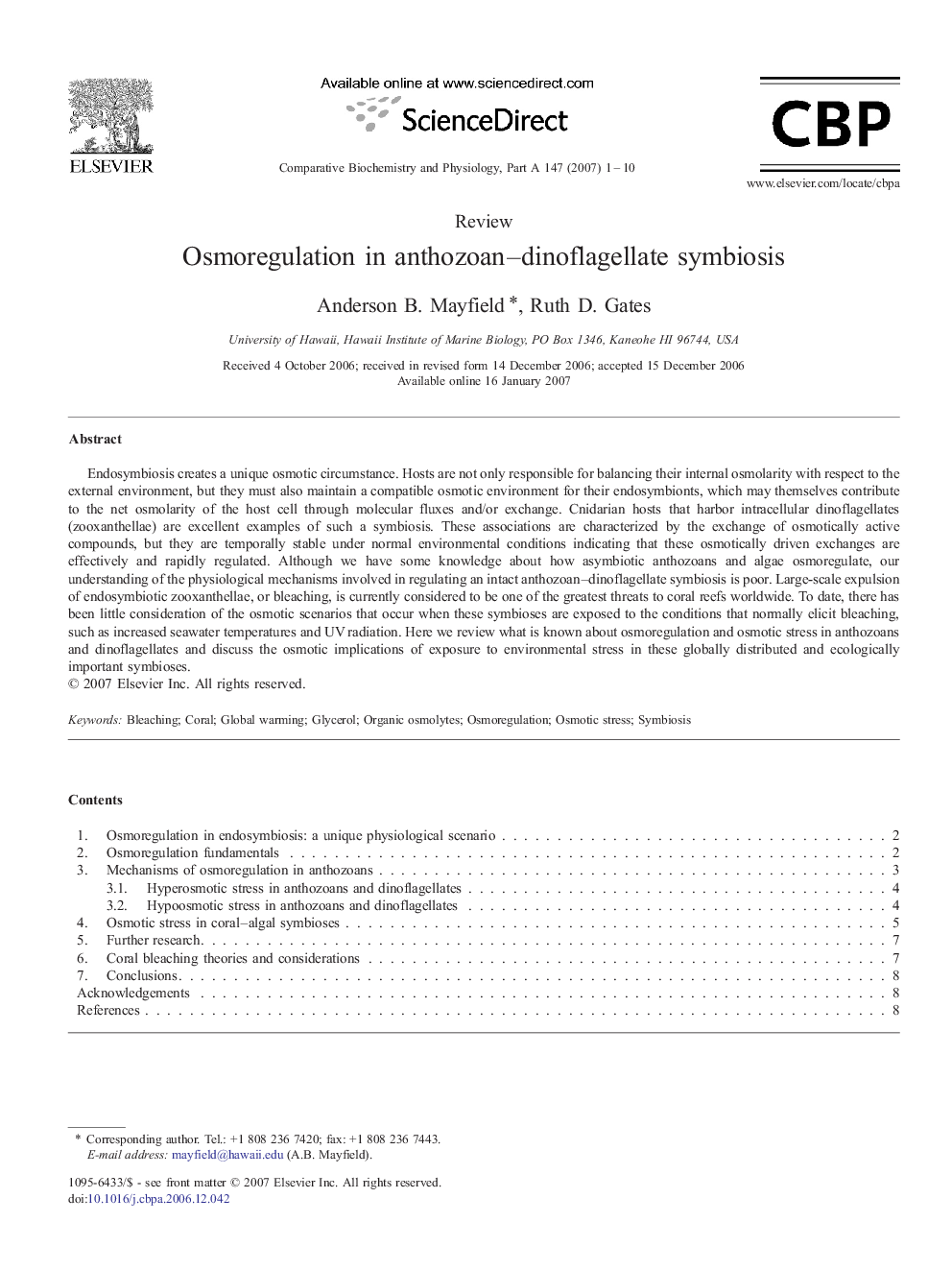| Article ID | Journal | Published Year | Pages | File Type |
|---|---|---|---|---|
| 1974818 | Comparative Biochemistry and Physiology Part A: Molecular & Integrative Physiology | 2007 | 10 Pages |
Endosymbiosis creates a unique osmotic circumstance. Hosts are not only responsible for balancing their internal osmolarity with respect to the external environment, but they must also maintain a compatible osmotic environment for their endosymbionts, which may themselves contribute to the net osmolarity of the host cell through molecular fluxes and/or exchange. Cnidarian hosts that harbor intracellular dinoflagellates (zooxanthellae) are excellent examples of such a symbiosis. These associations are characterized by the exchange of osmotically active compounds, but they are temporally stable under normal environmental conditions indicating that these osmotically driven exchanges are effectively and rapidly regulated. Although we have some knowledge about how asymbiotic anthozoans and algae osmoregulate, our understanding of the physiological mechanisms involved in regulating an intact anthozoan–dinoflagellate symbiosis is poor. Large-scale expulsion of endosymbiotic zooxanthellae, or bleaching, is currently considered to be one of the greatest threats to coral reefs worldwide. To date, there has been little consideration of the osmotic scenarios that occur when these symbioses are exposed to the conditions that normally elicit bleaching, such as increased seawater temperatures and UV radiation. Here we review what is known about osmoregulation and osmotic stress in anthozoans and dinoflagellates and discuss the osmotic implications of exposure to environmental stress in these globally distributed and ecologically important symbioses.
